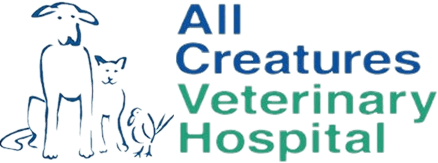News and Events
June 2015 – 3rd Annual Food Drive: Another Success!
Thanks so much to all our wonderful clients that donated this Month! We were able to drop off pounds upon pounds of human and animal food to the North Shore Moving Market. We are so happy to be able to give them a little bit extra help in the summer months.
The Moving Market accepts donations throughout the year and is located right here in Salem. They have a long list of people and families in need, hopefully, we can all donate to them more!
January 2015 – Fresh Breath and Straight Teeth…From Your Veterinarian?
Although many of us dread it, we visit our dentist routinely to ensure our mouth stays healthy and our smile bright. Our pets also benefit from a visit to their dentist and advanced dental care is quickly becoming more common. That’s right…braces for Boxers, crowns for Collies and a root canal for a Rottweiler is just a typical day at the Veterinary Dentist!
When we go to the dentist, we are not surprised when the doctor tells us that we need to have dental x-rays done. But, hearing the same thing from your veterinarian might shock you. After all, how does the pet know to stand still?
Digital dental x-rays are becoming more common at veterinary practices across the country. Since a large percentage of our pets suffer from gingivitis or even more advanced periodontal disease, this tool is vital for veterinarians and veterinary dentists.
Most people don’t realize it, but most of the pet’s tooth lies under the gum line where you can’t see any disease. Dr. Jan Bellows, a Diplomate in the American Veterinary Dental College explains, “Sixty percent of the tooth lies under the gum line. Since companion animals don’t talk (to tell us where the pain is), x-rays help the veterinarian see what’s below.”
Dr. Brett Beckman, past President of the American Veterinary Dental Society concurs. “42% of cats and 28% of dogs have hidden dental problems that we would never find without x-rays.” So, while you might think that your pet’s teeth are just fine, the odds are that he or she is actually losing bone and other important structures that help hold the tooth in place. The best way to determine this is the use of x-rays, done while the pet is under a general anesthetic.
Beyond checking for disease, dental x-rays are also important when it comes to breeding specific issues. Many toy breeds end up with crowded teeth or even adult teeth that never erupt above the gumline. Boxers, Bulldogs and other short-faced breeds also suffer from confirmation issues that misalign teeth.
Finally, dental issues can hinder, or even end the careers of working and show dogs. X-rays can help veterinary dentists find the fractured tooth of a working police dog or locate a tooth that has delayed erupting in a show dog.
Thankfully, your veterinary dentist is also equipped to help resolve many of these issues. Fractured teeth can be repaired with the use of crowns and root canals are often replacing extractions. As Dr. Kenneth Lee, a veterinary dentist in Colorado explains, “Dog’s canine teeth extend well below the gumline and often are closely associated with the jaw bone. Extracting these teeth has the potential for causing serious damage to the jaws.”
For confirmation issues and hereditary problems, corrective oral surgery and even braces are now available. It’s even possible to help offset the damage of severe dental disease.
Understanding the importance of your pet’s dental health is a great first step for most pet owners. Your pet doesn’t have to suffer from dental disease and you don’t have to tolerate “doggy breath”. Making a dental plan with your veterinarian will not only prevent dental disease but may stop other health problems as well.
You may not even know your pet is suffering. We recently had a cat name Moulty brought in for a mysterious lethargy by her owner. He noticed that she was quiet. She was much less active and sat with her back hunched up. She was still eating her food fine. She would cry when he picked her up. Many pet parents with older would attribute this to old age arthritis and ignore the symptoms but this owner was smart and cared about his cat. He brought her in to see us. We noticed a lot of brown calculus above the gum line on the crown of the tooth and pain when touching the gum near the back upper premolars. After digital X rays, which showed lots of root infection and loss of bone around the teeth, we surgically extracted 4 teeth. Now the parent reports she is running around the house and jumping on counters the way she used to. She no longer is in such agonizing pain.
The first step is to have your veterinarian do a complete oral exam on your pet. Your veterinarian will note any areas of excessive tartar build-up and any other concerns, such as fractured teeth, bleeding gums or ulcerations in the mouth.
Next, if appropriate, schedule a complete dental cleaning with your veterinarian. Done under a general anesthetic, cleaning will remove the tartar and plaque, reducing bacteria that cause serious illnesses, such as heart or kidney disease. Using digital x-rays allows the veterinarian to see under the gumline, a crucial step in preventing future dental problems.
After the cleaning, your veterinarian may apply a barrier sealant to help repel plaque-causing bacteria. This high tech – low cost – sealant gel is easy to continue at home and will help prevent further buildup of plaque and tartar.
Home care is a vital part of maintaining your pet’s dental health. From routine brushing to special water additives, chew toys and even a barrier sealant like OraVet, your veterinarian can help make caring for your pet’s teeth easier. Some foods are even designed to help remove plaque build-up! The best news? These products not only remove plaque and freshen breath, they just might help your pet live a few years longer.
January 2015 – Vet Connection
For both human and veterinary patients, an important part of any surgical procedure is the proper use of anesthetics. These drugs render us, and our animal friends, insensible to pain during the operation. Unfortunately, harrowing tales of anesthetic mishaps are often used by pet owners as a reason to avoid surgery for their pet. What are veterinarians doing to make sure your pet stays safe when a surgical treatment is needed?
It’s a common discussion thread on any pet-related website…someone mentions that they have a friend whose aunt lost a pet under anesthetic and all of a sudden, stories of dogs and cats dying under anesthesia are flying back and forth. Some businesses even play upon these fears and misinformation by incorporating scary statistics of anesthesia-related deaths into their marketing.
So, what’s the real story? How dangerous is veterinary anesthesia and how does your veterinarian make sure her patients have an uneventful surgery?
First, it’s important to realize that any two pets undergoing the exact same procedure may be at different risk levels for anesthesia. The animal’s age, weight, and physical condition, as well as any concurrent disease, will determine anesthetic risk. There is no “one size fits all” type of anesthesia.
Next, consider the source of the information. As an example, companies and information sites that advocate “non-anesthetic” dental cleanings for pets, will often quote a small study showing 1 in every 256 animals had an adverse event under anesthesia. What they fail to tell you is that particular study was done at a veterinary teaching hospital whose caseload included many patients with significant risk factors for anesthesia. More comprehensive research has shown that problems with anesthetics occur in less than 1 in every 10,000 pets.
Starting in the late 1960’s and early 1970’s, veterinarians, working alongside human anesthesiology counterparts, began developing standards and guidelines designed to provide better comfort and analgesia for animals undergoing surgery. This eventually led to the development of the American College of Veterinary Anesthesia and Analgesia and approximately 220 board-certified veterinary anesthesiologists around the world.
Many veterinarians will require pre-op physical exams and screening lab tests radiographs or ultrasound to make sure your pet does not have an underlying disease that could make anesthesia much riskier. These precautions allow your veterinarian to detect abnormalities before the pet is under anesthesia. Then anesthesia can be tailored to your pet.
Their work has helped provide veterinarians in general practice better strategies in key areas, such as proper patient monitoring, prevention of drops in body temperature and how to best use the latest anesthetic drugs.
During anesthesia knowing what’s happening on the inside of the patient is crucial. Modern monitoring devices, such as the, allow veterinarians and surgical technicians to quickly spot trends in patient vital signs. By closely watching blood pressure, pulse rate, oxygen saturation, body temperature, respiration, and carbon dioxide levels, veterinarians can address and even prevent adverse events.
Likewise, safety precautions for the patient are highly important. Circulating warm water blankets or forced air warming blankets (Bair Hugger®) can prevent hypothermia in anesthetized patients while state of the art calibrated fluid pumps can deliver precise levels of medications or vital fluids. Many veterinary hospitals now require patients have an IV catheter for all but the shortest of procedures.
Even anesthetic drugs have improved. Veterinary science now has safe anesthetic gases that quickly leave the pet’s system once the drug is removed from the breathing circuit. Reversible injections, such as Dexdormitor®, provide ways for veterinarians to wake up your pet more smoothly and get him back home to you sooner. For major surgeries medicines that act as both a pain medication and anesthetic can be continuously infused through an IV line during and after surgery to stop pain before the patient’s body reacts to it. Pain meds can also be administered locally in the skin where the incision will be made.
Finally, trained and highly skilled veterinary technicians and assistants are on hand to monitor your four-legged friend. Along with the high-tech equipment, these surgical assistants watch all vital signs so that the patient is kept at just the right level of anesthesia…deep even to prevent pain, but not deep enough to depress vital functions. Many of these technicians will also further their own education by specializing in anesthesiology and becoming part of the Academy of Veterinary Technician Anesthetists.
Your veterinarian understands your concerns about anesthesia…it can be very scary. But, before you believe all of the Internet rumors about rampant dangers of pet surgeries or dental cleanings, consider talking with your veterinarian and asking him about the hospital’s surgical and anesthesia protocols. You might be surprised how far advanced animal clinics will go to keep your pet safe and secure during surgery.
June 2014 – Second Annual Food Drive
All Creatures is hosting our Second Annual Food Drive for the entire month of June! We are happy to continue our relationship with the North Shore Moving Market, where we will be donating non-perishable food as well as dog and cat food. The North Shore Moving Market is the only mobile market that includes pet food with their regular delivery.
Established in 2005, the North Shore Moving Market is a free food and free delivery service operating to assist low-income elderly, handicapped or disadvantaged individuals and their families.
Please bring all donations, including any cash donations to All Creatures Veterinary Hospital during our regular business hours.
September 2013 – All Creatures Veterinary Hospital joined the American Association of Feline Practitioners
All Creatures has joined the American Association of Feline Practitioners (AAFP) to show our commitment to improving the health and welfare of cats by having high standards of practice, feline specific continuing education as well as making our hospital more feline friendly.
June 2013 – First Annual Food Drive
All Creatures Veterinary Hospital will be hosting our First Annual Food Drive for the entire month of June! We will be accepting donations of boxed and canned goods, as well as dog and cat food to contribute to the North Shore Moving Market.
St. Joseph’s Harvest of Hope Food Pantry established the North Shore Moving Market in 2005. It is a free food, free delivery service operating to assist low-income elderly, handicapped or disadvantaged individuals and families. They deliver groceries to nearly 200 households located in the surrounding communities per month.
The North Shore Moving Market is also the only mobile market that includes pet food with their regular delivery. The Pet Project was established to help ease the financial burden of pet ownership by providing food for those individuals with pets.
All Creatures will also be accepting cash donations to purchase dog and cat food for the Pet Project.








